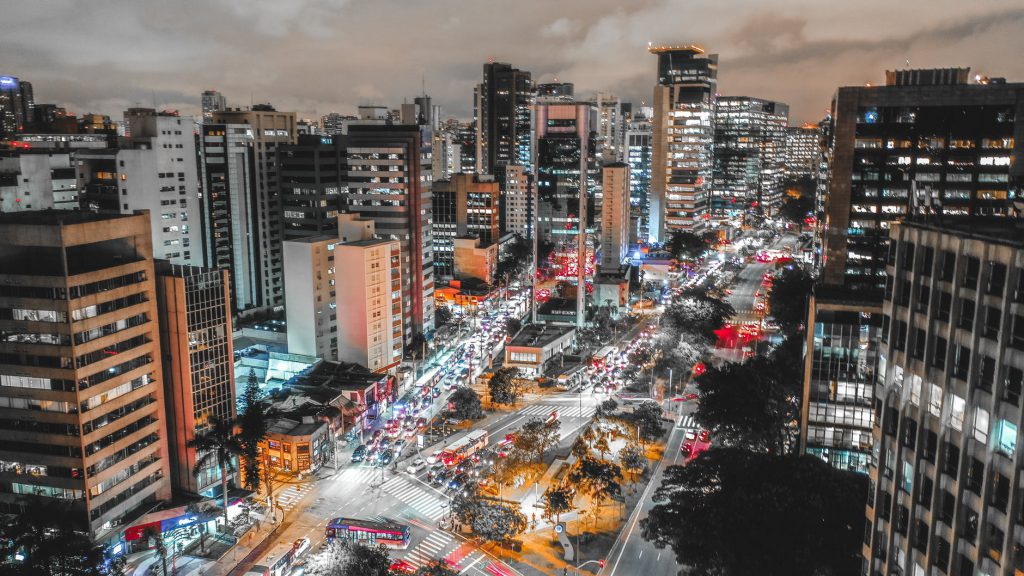Introduction to Metropolitan Planning Organizations (MPOs)

- 31st July 2021
Kristen Z, Transportation Planner
[<3 Minute Read]
What are Metropolitan Planning Organizations (MPOs)?
Metropolitan Planning Organizations (MPOs) are organizations that plan the transportation system in individual metropolitan areas in the United States. They develop strategic priorities for the transportation system, write short-term and long-term transportation plans and make decisions on how to best allocate federal, state and local tax dollars across the metro transportation system. Recognizing the economic importance of metropolitan areas to the nation’s economy, MPOs were first put in place by federal legislation in the late 1970s to address transportation issues and needs that cross jurisdictional boundaries of local governments.
What Function Do MPOs Serve?
MPOs strive to make improvements in safety, modernize the transportation system, make transportation accessible to more people, contribute to larger societal goals and strategically expand the local transportation system. MPOs plan, program and fund a variety of projects including reconstructing highway interchanges and arterial corridors, replacing public transit buses and building new bike/pedestrian facilities. Currently, typical issues that MPOs are handling include preparing for a new federal infrastructure bill, developing and carrying out performance-based planning and balancing traditional needs, including balancing highway preservation with building bicycle and pedestrian infrastructure.
What Type Of Staff Work At MPOs?
While they are often also staffed by professional transportation planners, administrative staff and managers, MPOs are typically composed of their Boards of Directors, which are composed of elected officials from area local governments, the State Department of Transportation and other owners/operators of public transportation networks or services.
Where Are MPOs Located?
Typically, MPOs are housed in larger Councils of Governments (COGs) or Regional Council (RC) organizations. MPOs are located in all major metropolitan areas in the United States. They are required to exist in metropolitan regions larger than 50,000 people in population and have existed for over 40 years. Since their existence, the focus of MPOs has varied depending on the needs and interests of the region.
Who Works Within MPOs?
Since MPOs plan for transportation systems that are composed of individual networks owned and operated by individual cities, counties, states and other governmental entities, there is a significant amount of coordination with local governments and engagement with stakeholders and the general public.
What Role Do MPOs Play in Transportation Decision Making at the Metropolitan Level?
MPOs play a significant role in transportation planning and decision making at the metropolitan area level. Their long-range plans, called Metropolitan Transportation Plans (MTP), serve as the official source for transportation investment in metropolitan areas. Federal legislation allocates a portion of the larger federal transportation funding programs to large MPOs (MPOs that serve regions populated by over 200,000 people), providing these MPOs with the responsibility to decide which projects will receive the federal funding. Since MPOs receive federal funding for operations, MPOs often conduct studies and data collection efforts that address priority focus areas such as technology, safety, congestion or walkability.
As part of their plans, MPOs often include projects planned for the regional transportation system that are funded by local governments. Additionally, State DOTs are required to include their capital projects in MPOs’ plans, which are subject to approval by the MPO Board. MPOs serve as the exclusive hub for coordinating transportation decision-making, prioritizing and planning the metropolitan transportation system and producing productive working relationships among local governments, the State DOT, and any other public owner/operator of a transportation system or service, such as a public transit provider.
Loved this post and want to learn more? Check out what we’ve done for some of our customers and see how transformative a modern database can be when it comes to managing transportation data!


